The Top Ten Gluten-Free Misconceptions and Pitfalls, plus Oats & Honey Apple Crumble
Oct 23, 2013, Updated Aug 30, 2017

Gluten-Free living is complicated, especially when you are listening to outdated, incorrect information.
Over the seven years I’ve been writing about thriving gluten-free, I’ve found some pieces of celiac lore that just won’t die, even once completely disproven. For October Unprocessed, I want to bring them up and put them out to pasture, permanently.
The reason so many of these urban legends continue to have life is because folks are searching for answers. They understand that they have to avoid wheat, rye, and barley but don’t know the other names for them. For example, barley malt is frequently just called “malt” on the labels.
Dr. Google is a lousy diagnostician and historian. Everything on the web lives forever, so if you choose just the right search terms, you will pull information from long before the research was updated.
I’ve gathered my list of proven, accurate sources for celiac and gluten-free living to share with you.
When you have a question about an ingredient, search these sites first, then ASK these sites your question if you can’t find the answers. The folks who write these sites go back to the medical literature to find your answer, they don’t have financial ties to labs or drugs, they just want to help.
- Gluten Free Drugs
- Celiac.com
- Celiac Central
- The Mayo Clinic
- Medline Plus
- University of Maryland Medical Center
- The University of Chicago Celiac Disease Center
- Gluten Intolerance Group
Top Ten Gluten-Free Misconceptions
1. Maltodextrin doesn’t have malt; it is a sugar. Products made in other countries can have wheat-based maltodextrin and must be labeled as such. It is never made from barley or rye.
2. Modified Food Starch – If made from wheat has to be labeled as such; never made from barley or rye.
3. Caramel Color is made from Corn or Sucrose in USA and highly refined to remove gluten in Europe.
4. Shredded Cheese uses cellulose (wood starch), potato, or cornstarch, but not wheat starch. Yup, you are eating ground-up, highly processed trees when you use pre-shredded cheese. Grate your own to avoid this.
5. Blue Cheese – Since 1993 testing has shown no gluten in blue cheese
6. Envelope Glue – There’s no gluten in envelope glue, according to the international Envelope Manufacturers Association, no matter what a major Gluten-free brand claims.
7. Grain Alcohol – The distillation process removes all gluten, just watch for gluten being added back with flavorings
8. Vinegar – Distilled vinegar and apple cider vinegar are both fine. Only vinegars that have gluten added back with the flavorings are a problem
9. Coffee is naturally gluten-free, but watch for flavorings.
10. Corn – All Corn is naturally gluten-free; watch for flavorings, seasonings and other additions.
Top 10 Inadvertent Gluten Exposures
This list is of foods that newly diagnosed gluten-free folks typically forget have gluten, creating an exposure and reaction.
1. Soy Sauce – Most soy sauce contains wheat, which means any food made with soy sauce is gluten-full, including things like Barbecue and Teriyaki sauce.
2. Soups, Sauces, and Gravy – Most creamy gravies, soups, and sauces have wheat flour as a thickener. Any food made with a prepared soup as an ingredient is likely gluten-full.
3. Oatmeal – Naturally, oatmeal does not contain gluten. The growth rotation of farmers sometimes has oats following wheat in the fields and unless precautions are made, the oats travel in trucks that carry wheat, are processed in mills that also handle wheat, and get contaminated with gluten along the way. Look for certified gluten-free oats.
4. Beer – Barley is the reason beer is gluten-full. Some beers also contain wheat.
5. Vegan Meat Replacements are typically made with wheat gluten. Choosing a Vegan gluten-free lifestyle means being very careful of your product choices.
6. Sushi Soy sauce in the dipping sauce is obvious, but much sushi uses some soy in the seasoning of the individual pieces as they are being made. If inexpensive sushi is made from faux crab or fish, that is also gluten-rich.
7. Rice Crispies – Yes there are gluten-free rice crispies, but the ones used to make the pre-made treats or used in bakeries to give a bit of a crunch to cookies or pastry are not that kind of rice crispies.
8. Tortillas – Corn tortillas are naturally gluten-free, but many restaurants use the newer wheat and corn blends or fry their chips in a fryer that is also used for battered items, contaminating the chips with gluten.
9. Chocolates and Candies – Flavorings, rice crispies (puffed rice), and sweeteners can all contain gluten. Also, watch for malt powders.
10. French Fries – Although you would expect French fries to be just potatoes and oil, many have a flour coating to make them crisper or to allow spices to stick. The other concern is the dreaded cross-contaminated fryer, used to fry battered foods as well, leaving tiny bits of wheat dough all over your fries. Make them yourself at home.
—
I review and discuss many of the gluten-free brands I enjoy on my blog. One of my favorite brands is Bob’s Red Mill, especially because of their dedicated gluten-free facility. I use their gluten-free oats exclusively for this wonderful crumble.
The oatmeal topping marries well with the apples, while being lightly sweetened with honey.
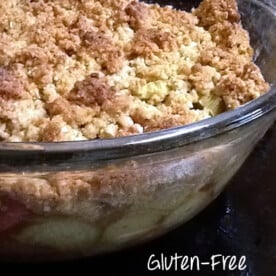
Gluten-Free Oats & Honey Apple Crumble
Ingredients
- 3 pounds organic apples, cored and chopped
- ½ teaspoon vanilla extract
- 1 ½ teaspoon cinnamon, divided
- 2 cups gluten-free rolled oats
- ¼ cup melted butter
- ¼ cup honey
- ½ cup chopped pecans
Instructions
- Preheat oven to 350 degrees F (180C or gas mark 4)
- Grease a deep casserole dish.
- Stir together the apples, vanilla extract, and ½ teaspoon cinnamon, and pile the apples into the casserole dish.
- In a separate bowl, mix together the oats, butter, honey, pecans, and remaining 1 teaspoon cinnamon.
- Spread the topping mixture on top of the apples.
- Bake for 40-45 minutes, until browned and the apples are soft.
Nutrition
Photo: “Gluten Free Aisle” © 2007 by Alexis O’Toole, used under Creative Commons License.

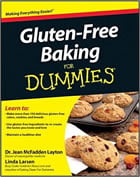


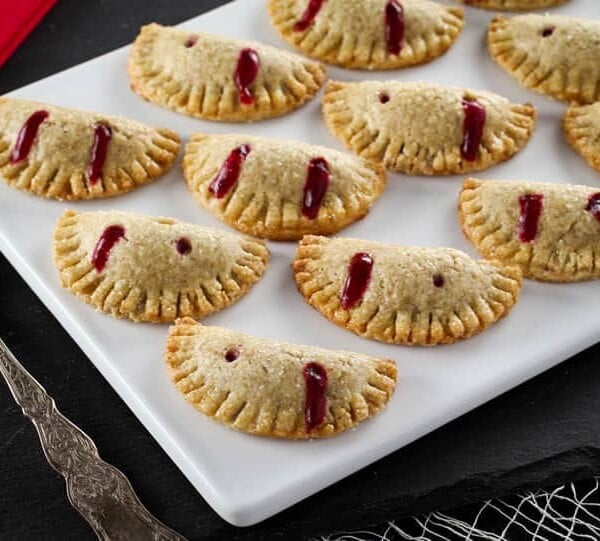
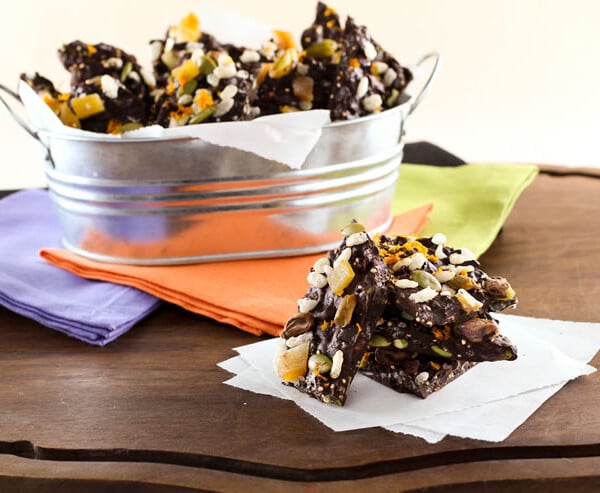

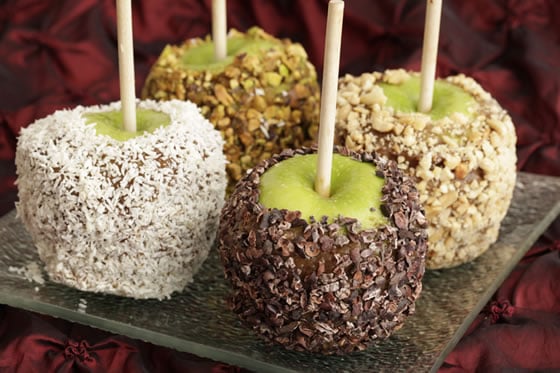















Jean, thanks so much for this recipe. My mom is allergic to wheat and gluten sensitive. Apple crisp is one of my standard dishes at Thanksgiving, so it’s nice to know there is a good substitute available that my mom can eat if she wants some. And the recipe sounds delicious, as well, so it’s all good!
I’ve been scouring the internet this morning looking for some info to get started on a gluten free diet. This is some of the most helpful I’ve found! Thanks so much for clearing up so much misinformation and pointing us in the right direction.
🙂
Great post Jean. I’ll add the link to my Facebook page for my readers. Any reason you left spelt and kamut off the list? And some people may not realize that farro is wheat. They are ancient forms of wheat or a wheat-wild grass cross, so my understanding is that they should be avoided. We went wheat-free and gluten-free in January by choice. Then I was diagnosed as gluten-intolerant. Quite surprised! Now I am being 100% diligent in searching out the hidden wheat and gluten. Interesting on the distilled grains. Although we rarely drink grain alcohols, like vodka, I thought it would still have the gluten. nice to know it does not. I am with you on my love for Bobs Red Mill!
Hi Sally,
Thanks. I admit, I wanted to talk about spelt, kamut and farro a bit but thought my article was already getting a bit too long. They are all ancient wheat forms.
Interesting, Jean. My husband has progressive MS and has been advised by his neurologist to reduce saturated fats. I’ll look into the gluten connection, too.
Hi Ashley,
I think most doctors haven’t got enough nutritional training to make good diet suggestions, and they lack time to get a deep enough history in the typical 15 minute appointment.
No, I don’t think everyone should do a gluten-free diet.
But, and this is a big but, if they have symptoms of mal-digestion, another autoimmune disease or a family history of celiac, pernicious anemia, type one diabetes, lupus, sjogrens or thyroditis, then they need to have the blood work run to check for a gluten response.
Many, many of my patients have had to either get the tests run on their own or convince a skeptical doctor to run them.
1 in 100 (or 133 depending on who’s research you look at) people have celiac disease, 90% of them DON’T know it.
Hi Jean. Thanks for this piece! I think Ruth is asking why doctors and nutritionists aren’t more vocal about educating the majority of people in the world who do NOT have celiac disease and are NOT gluten intolerant. I have met so many people who now think that gluten (primarily wheat) should be avoided at all costs, because they’ve heard it’s poison to their bodies. Meanwhile, they buy all these prepared “gluten free”-labeled products that have added sugar or fat or lack nutrients and think they’re doing something better for themselves. Don’t get me wrong. I’m nearly vegan, so I’m not against altering your diet for good health. I just don’t like to see the extreme view perpetuated by some marketers and gluten-free proponents who suggest that all people should reduce or eliminate gluten from their diets because it’s inherently bad for you. Are you of the mind that all… Read more »
Hi Ruth,
Gluten-Free became popular in the media because famous folks like Elizabeth Hasslebeck wrote books, or athletes like Novak Djokovic improved their games.
That awareness highlighted an underlying cause of people’s distress.
Add that to the explosion of research about celiac disease and gluten intolerance, and you get a new component in Doctor’s diagnostic algorithm.
Finally folks who had symptoms for years could ask for celiac testing, research for themselves about why they had symptoms.
The incidental fact of a weight loss when people removed an irritant from their food certainly didn’t hurt either.
I disagree here only that Elizabeth Hasslebeck is famous! People jumped on this bandwagon because they thought they could lose weight. Naturally, if you give up doughnuts, bagels, and lots of bread, you will definitely lose weight! It’s just another fad, and a huge money maker for big industry!
Hi Karen,
I agree that Elizabeth Hasselbeck isn’t necessarily famous but her book certainly was.
The gluten-free diet has been used by some folks who truly didn’t need it, but I don’t think it is a fad
I’ve never suffered from gluten issues or wheat allergies and have a hard time understanding why going gluten-free has become so overwhelmingly popular. I imagine that most of the population can tolerate gluten yet chooses to take on this fad because people think it will help them lose weight or they buy the marketing hype. I love making old-fashioned breads with wheat, rye and yeast, as well as making other baked goods that contain gluten. I’m sure there are some great substitutes and in order to reach those who want to avoid gluten for whatever reason, I will probably try out some gluten-free recipes to see how they turn out. However, I’m really puzzled at the reasons why gluten has become the new pariah in the food world. If you have a good answer for me, please do let me know!
We tried a gluten-elimination diet to see if that was what was causing my husband’s digestive problems, and discovered that sorghum, oat flour, etc., can make really tasty cookies, pizza crust, and crackers. (Sandwich bread is really difficult!!) We just *like* some of the “alternative” flours now. And a little extra variety probably doesn’t hurt!
Very informative and such important info – thanks, Jean!
Actually all grains do have gluten. The fact that we are told that wheat, rye and barley are the only ones is wrong. If people are celiac they can react to products that are distilled grains which could contain wheat so it really depends on each person if they use these products.
Hi Connie, The only grains that contain gluten proteins are Wheat, Rye and Barley. No matter how many times you hear that other grains contain gluten, it is not true. Each grain does contain proteins that can provoke immune responses, but they are not the same responses as a gluten intolerance. Distilled grains (like alcohol) have no proteins left in the substance, so no reaction to gluten there either. What I find in clinical practice is once someones body begins an autoimmune response like the one to gluten, frequently they then have other foods that create problems for their individual body. This isn’t a gluten response, it is an autoimmune or immune system response. Learning which other foods create an immune response for each person is a personal process. For some people, they feel better avoiding all grains. When my patients continue to have problems post diagnosis, I lead them… Read more »
I am celiac. A chronic one. Diagnosed in 1989. Still….everyday is a challenge. I agree..not always a celiac response but definitely an auto immune response. Many things I should be able to eat give me the same negative response as if gluten were present. I still struggle….maybe today I can’t tolerate what I did yesterday. I am overly cautious. Add beef btw….cant tolerate any animals that eat grain either. For me celiac and autoimmune has restricted my life severly and I have other physiological issues like hair loss liver issues etc…. grow your own food and eliminate cross contamination…